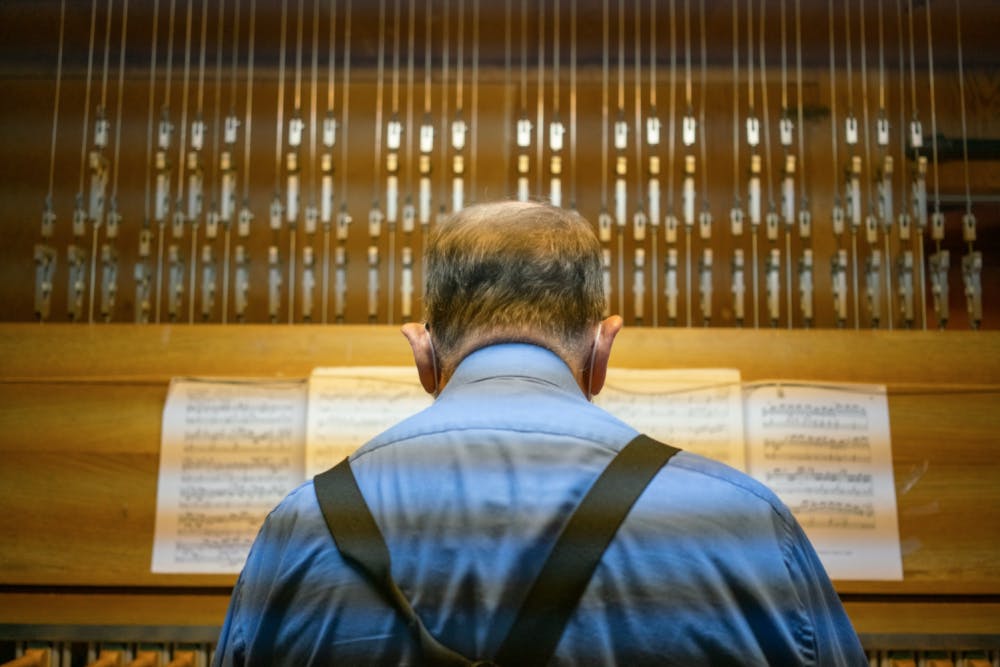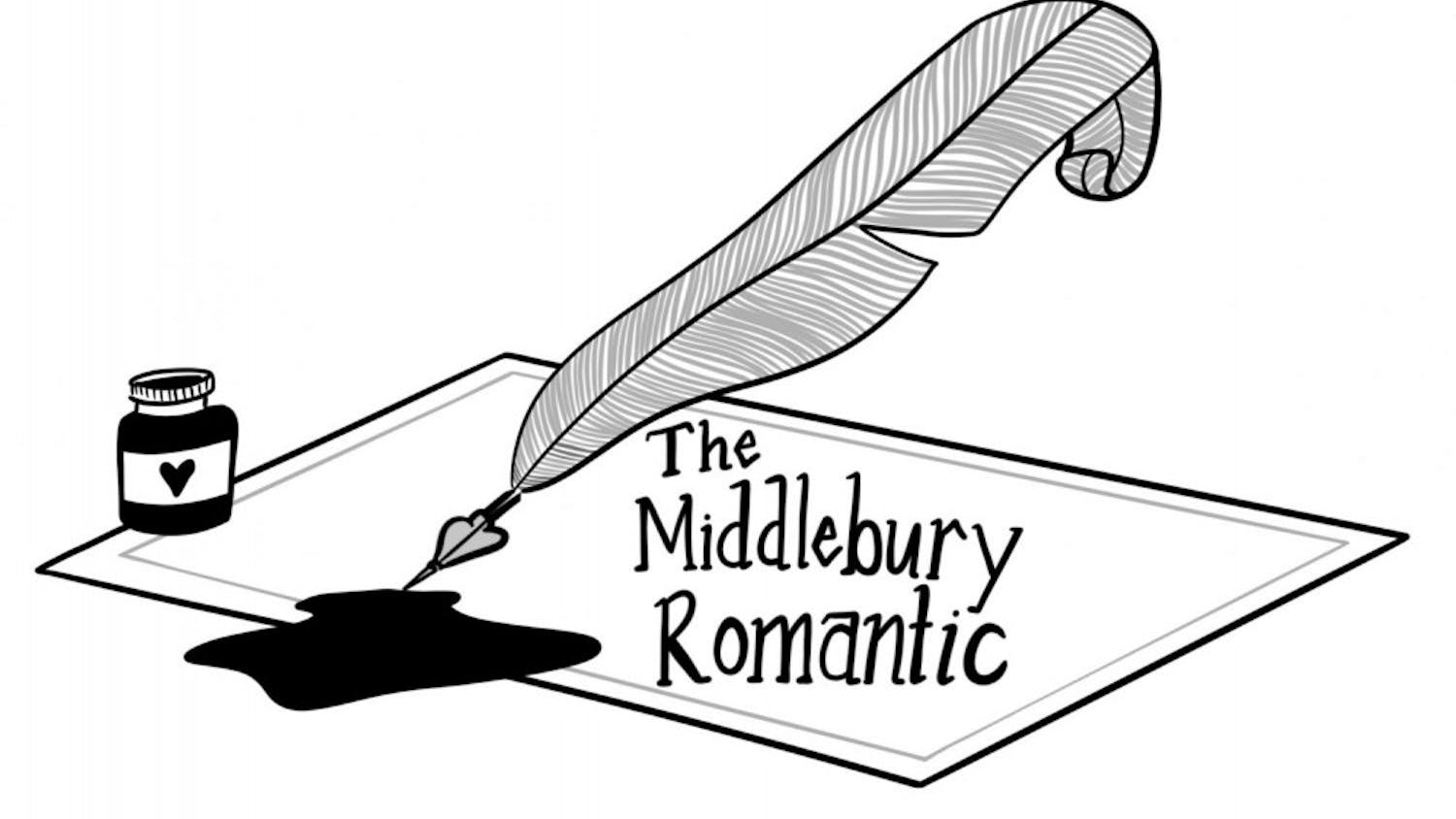I did not know what to expect when I waited for George in front of Mead Memorial Chapel at 5:30 p.m. I have only heard the instrument from afar. When the sun falls behind the trees and paints the late summer sky pink and blue, then, you hear the bells, opening with the same tune every day.
The 75-step climb to the top of the chapel was arduous. With amazement, I watched George, who is 86, navigate the steep wooden stairs and low ceilings with a familiarity that only comes with decades of repetition. As the college’s carillonneur, George Matthew Jr. has climbed these stairs since 1986.
“I have played here for 36 years, and I have no intention to stop,” he said.
For all the time I’ve spent at the college, I have never seen the instrument behind our daily chimes. Set up like a keyboard, it sits on the top chamber of the chapel and has wooden keys that are connected to bells of various sizes. According to George, its largest bell weighs up to 2,300 pounds — as heavy as the liberty bell.
Music runs in the family. George’s father was an organist, and his uncle was an exceptional violinist. But after several frustrating experiences with the violin and the piano, he said that he “almost didn’t become a musician.”
However, at the age of 13, George took after his father and picked up the organ, and later, the carillon.
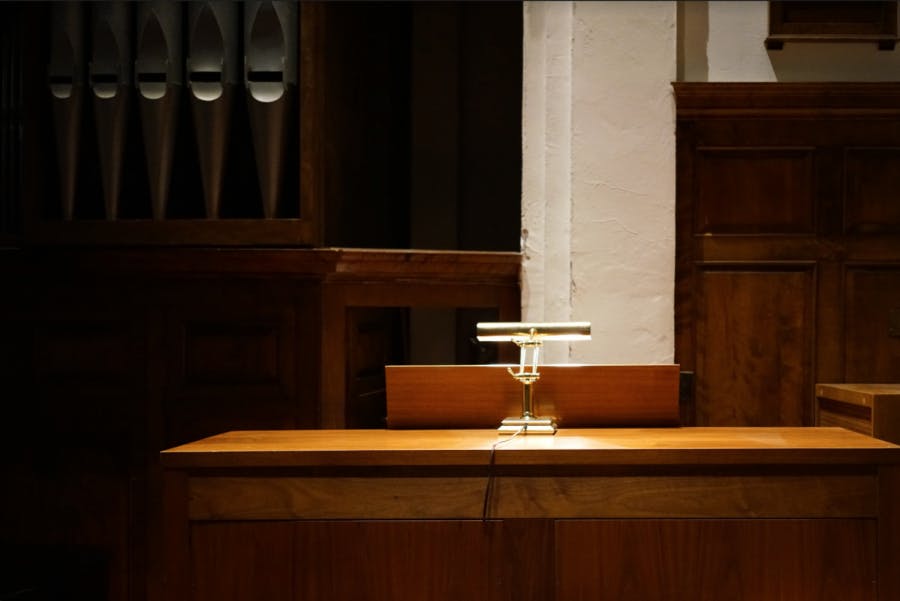
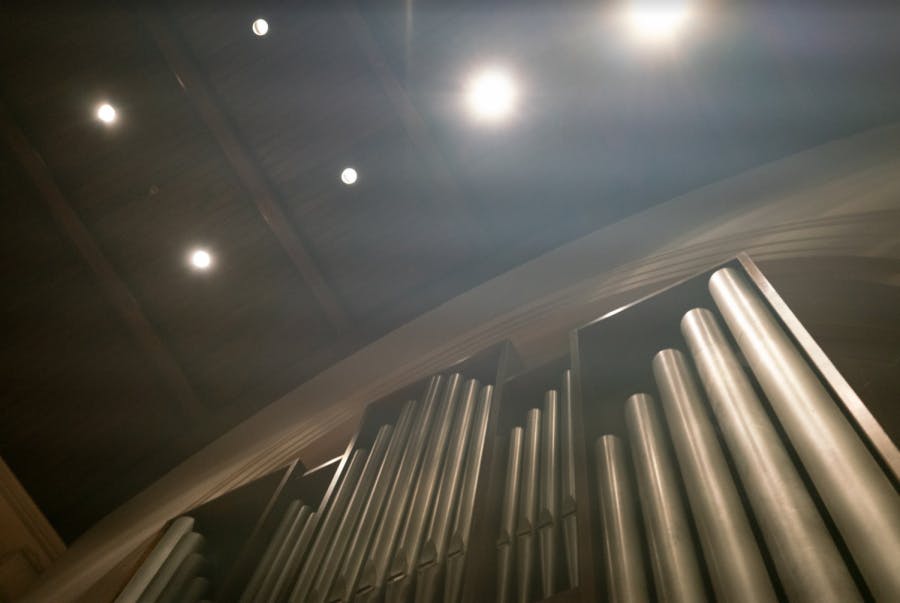
Taking after his father’s advice that “you are not gonna make a lot of money as a musician,” George studied chemistry at Columbia University, and worked as a chemist for 15 years after graduation. Later, he found his way back to the carillon once it became clear that he could support himself playing full-time.
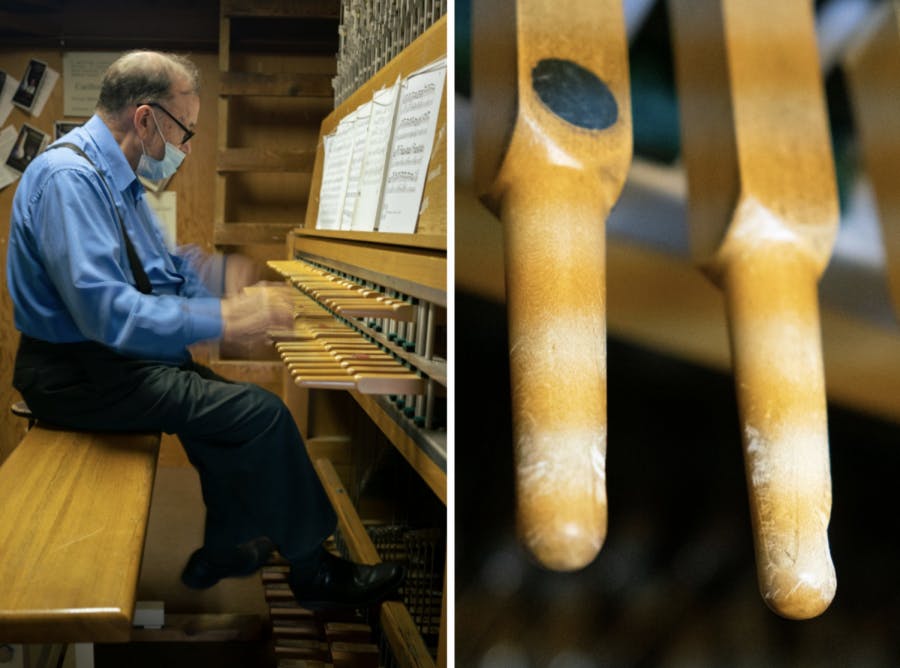
“It’s interesting. In fact, now I make more money as a musician than I did as a chemist,” he laughed. “However, I am still very interested in chemistry and the sciences. I still subscribe to science magazines and follow the latest news. I enjoyed my time studying chemistry.”
Now, as a full-time carillonneur, George practices four hours a day, mostly on his practice keyboard at home. The work has taken him across the world: George speaks and reads French and German, holds a master’s degree in Indian music and has a deep interest in culture and languages. His license plate even reads “clogra”, which means “carillon” in old Irish.
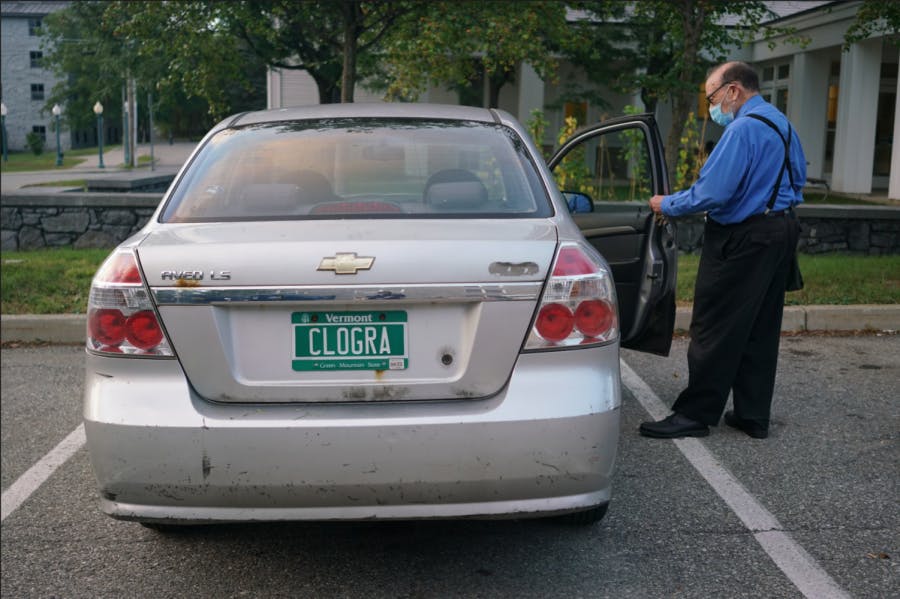
Talking to George feels a bit like talking to the entire history of carillon-playing the last 70 years. He told me about the making of the carillons in the churches of Russia, Germany, France and China — the specific weight and dimensions of the bells and how the largest bell in history was sunk in a shipwreck.
“I am sure with all the technologies they have these days, they can retrieve the bell,” he said. “I would really like to see it in person — the largest bell in the world.”
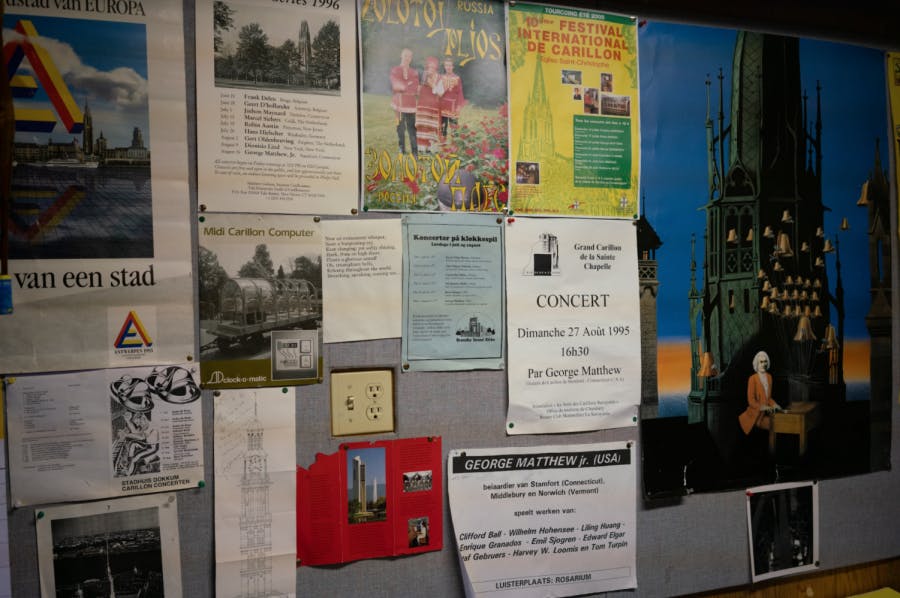
The first piece he played for me was a folksong from Taiwan, and he asked whether it reminded me of home. It was surreal to hear an oriental folk song in the little attic of Mead Chapel, so far away from home.
“One of the reasons why I love the carillon is because you can play music of all kinds and origins, for people from all over the world,” he said. “It’s not just about a specific religion or church.”
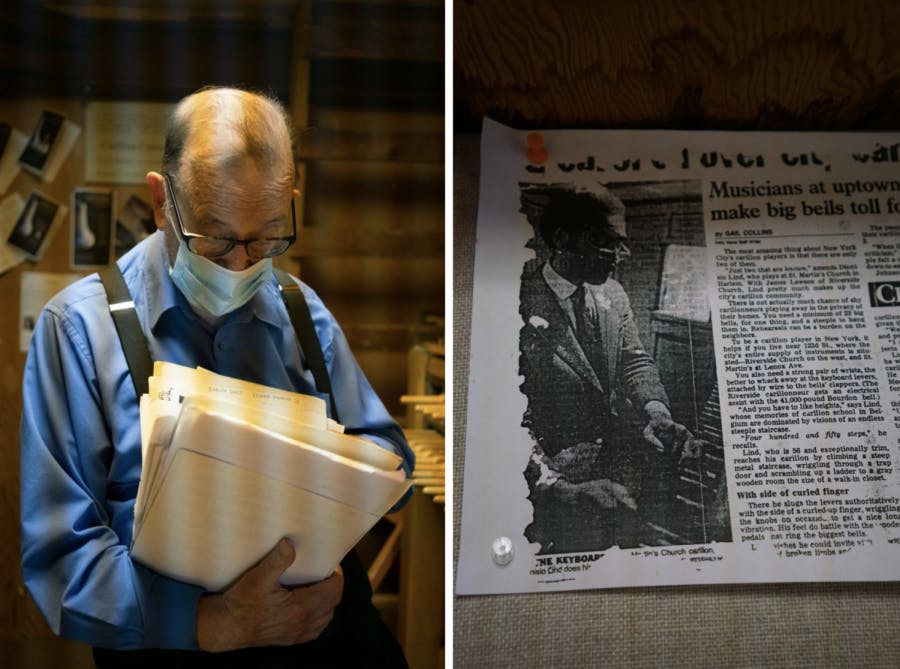
Pointing to a news clip pinned to the wall of the room, George told me that he studied the carillon under Dionisio Lind, the first Black carillonneur in the world, who played the world’s heaviest carillon in New York City. George referred to him affectionately as “Dio.”
“Dio told me once: always play the carillon in front of you. Not the carillon at home, not the ideal carillon halfway across the world that you dream of playing. Play the one in front of you,” George said. “Because everyone is different, and you have to tune in to the one in front of you: its unique beauties, unique problems. Everything. That’s how you play well.”
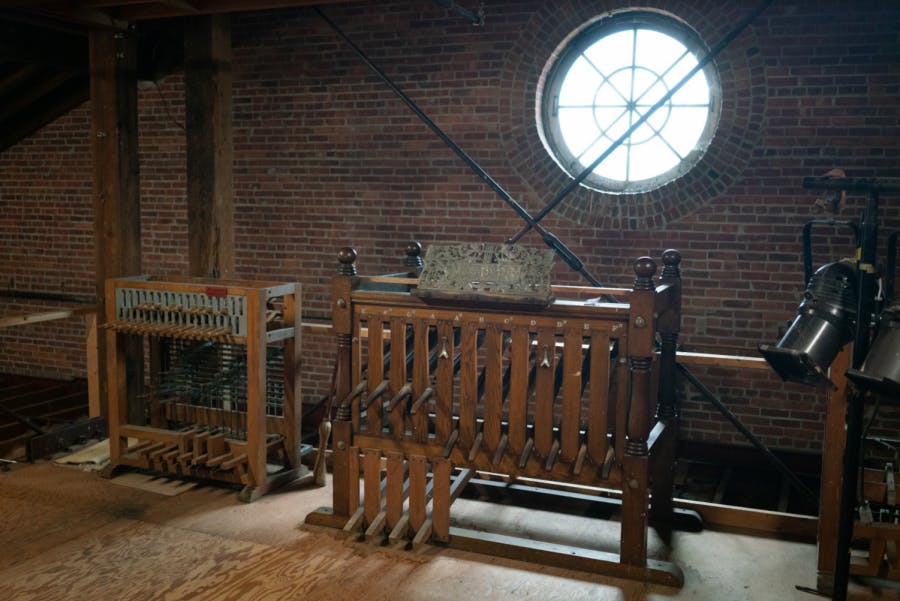
As we exited the chapel, I realized that between working and looking for work, I couldn’t remember the last time I dedicated entire hours to a live performance. It felt meditative. Now, I take a little pause in my day when I hear the same opening tunes at dusk everyday. I think of George making his way to the little wooden room above the whole campus, and somehow feel a little lighter.
We stayed for nearly two hours, and the sun had already set as we exited the chapel. To my surprise, before I was able to thank him, George thanked me for being there and giving him a reason to play longer.
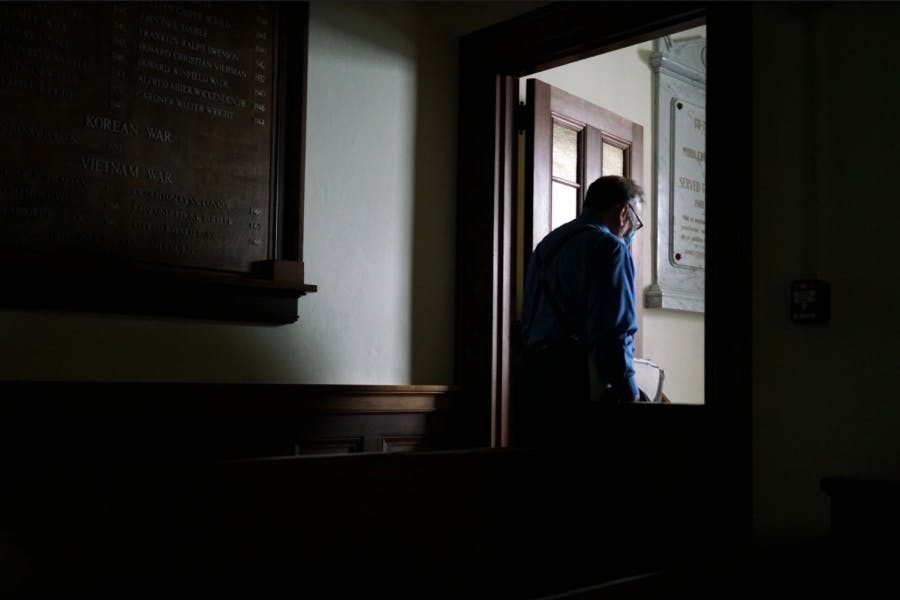

Florence Wu '22 is the multimedia editor specializing in photojournalism. She enjoys photography as a way of connecting with others, as well as recording special events and moments in her personal life. She is inspired by the works of Robert Frank, Joel Sternfeld, Alec Soth, Teju Cole, and Gregory Halpern. This year, she will be working on a photojournalism project on the lives of workers at the college and town of Middlebury. Feel free to contact her via email for photo, video or podcast ideas.

